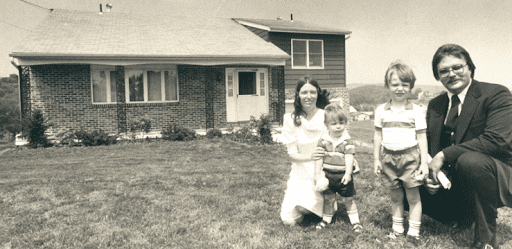The Story of How Radon was Discovered in Homes
Who is Radio Active Stanely?

In January of 1984, Stanely Watras and his young family moved into their new home in Boyerstown, Pennsylvania. Stanely began work at the soon-to-be-operable Limerick Nuclear Power Plant as a construction engineer. A few weeks before the plant began its energy production, they installed radiation detectors at the exterior doors. Employees would walk through them at the end of their shift, ensuring that they were not tracking radioactive material into the streets of their small town.
Imagine the confusion that was caused one morning when Stanley arrived at work and set off the radiation detectors as he entered the building, when the power plant that was still free of radioactive material. For the next few weeks, Stanely continued to set off the detectors until it was discovered that the radioactive material was on his clothes and the source was his home. Upon further investigation it was determined that there were extremely high levels of radon in the Watras’ home. The EPA recommend safe levels are under 4.0pCi/L. The level in the Watras’ home was 2,700 pCi/L.
Because the levels of radon found in the Watras’ home were higher than levels detected in typical uranium mines, the family promptly moved out of their home and the Environmental Protection Agency moved in. For the next several months, the EPA used the Watras home to test multiple radon mitigation systems. They were eventually able to get the levels below 4.0 pCi, installed an alarm that would sound if levels every crept up to unsafe levels again and the Watras family moved back into their home.
What Is Radon?
Radon is a naturally occurring radioactive gas that can cause lung cancer. Radon is created as part of the decay process of uranium. The EPA estimates that, nation wide, radon is responsible for 21,000 deaths from cancer a year; of these 21,000 deaths, roughly 19,000 of these individuals are smokers. Exposure to both cigarette smoke and radon gas puts individuals at a much higher risk than either of the two factors alone.
Where does radon come from?
The presence of uranium and its progeny (radon) in the earth was not new information. However, until the Watras’, it wasn’t understood that radon could be seeping into homes through cracks in foundations and well water. Naturally, the Watras’ neighbors were concerned that the levels in their homes may also be extremely high. Testing indicated that half were within acceptable levels. This was because the entire neighborhood was built on the Reading Prong, a rocky belt that contains elevated concentrations of uranium.
To understand how this could be, it may be helpful to think of how underground water sources can travel great lengths to find a spring to flow through. It, like radon, is looking for the path of least resistance. This is what happened in the case of the Watras’ home. Their house happened to have been built on top of a crack in the rocky out cropping that radon was able to escape through.
What happened to the Watras family?
As of 2015, Stanely and Diane Watras’ were still living in their home. Despite the dire predictions from experts at the time of the radon discovery in their home, none of the five family members have died from lung cancer. The radon mitigation system installed in their home has done its job.
How can I determine if there are elevated levels of radon in my home?
Elevated radon levels does not mean your home is unfixable. Depending on the size and design of the home and the type of the foundation, mitigation systems can be installed for under $2000. (Sometimes under $1000.) If you are concerned about radon levels in your home, consider conducting a long term test. AccuStar’s Alpha Track radon test kits are used for long term radon testing. The long term test offer a better representation of the radon concentration over different seasons and building conditions. Exposure time is typically between 3 and 12 months. These kits can be purchased for $30.
